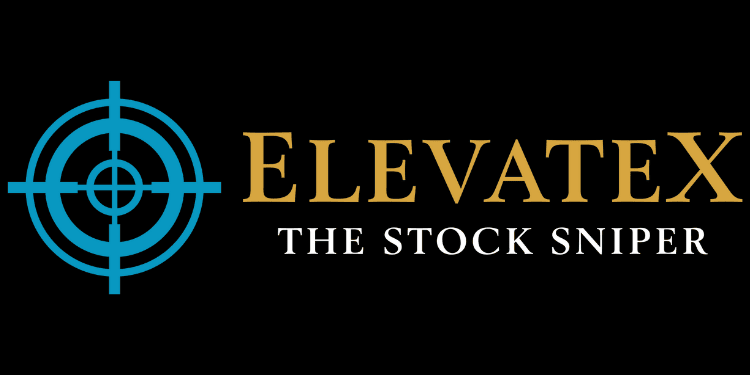- Live Life Grow Wealth
- Posts
- 🌐 Series 9 Day 2: Understanding GDP, Inflation, and Interest Rates
🌐 Series 9 Day 2: Understanding GDP, Inflation, and Interest Rates

Today’s Headline
🌐 Series 9: Global Investing & Economic Forces
Day 2: Understanding GDP, Inflation, and Interest Rates
Why These Three Numbers Decide Whether Your Investments Grow or Crash
When I first started learning about the global economy, I remember being overwhelmed by all the terms. GDP, inflation, interest rates… it felt like I was reading another language.
But over the years, I realised something important:
These three simple indicators shape the entire direction of the stock market.
Today, I want to break them down in a way that even a 12-year-old could understand.
No complicated formulas. No boring economic textbook talk.
Just clear, simple explanations you can actually use to make better decisions with your money.
So grab your coffee, take a deep breath, and let’s decode the three numbers that move markets around the world.
“If You Enjoy My Daily Investing Insights, Click Here — I Found an Investment Tool You Don’t Want to Miss.”
Someone just spent $236,000,000 on a painting. Here’s why it matters for your wallet.
The WSJ just reported the highest price ever paid for modern art at auction.
While equities, gold, bitcoin hover near highs, the art market is showing signs of early recovery after one of the longest downturns since the 1990s.
Here’s where it gets interesting→
Each investing environment is unique, but after the dot com crash, contemporary and post-war art grew ~24% a year for a decade, and after 2008, it grew ~11% annually for 12 years.*
Overall, the segment has outpaced the S&P by 15 percent with near-zero correlation from 1995 to 2025.
Now, Masterworks lets you invest in shares of artworks featuring legends like Banksy, Basquiat, and Picasso. Since 2019, investors have deployed $1.25 billion across 500+ artworks.
Masterworks has sold 25 works with net annualized returns like 14.6%, 17.6%, and 17.8%.
Shares can sell quickly, but my subscribers skip the waitlist:
*Per Masterworks data. Investing involves risk. Past performance not indicative of future returns. Important Reg A disclosures: masterworks.com/cd
📌 Part 1: What GDP Really Means (And Why Investors Care)
GDP stands for Gross Domestic Product.
It measures the total value of everything a country produces in a year.
Think of a country like a giant factory.
GDP tells us how much that factory produced.
When GDP grows, it usually means:
People are working
Companies are selling more
Wages are rising
The economy is healthy
When GDP shrinks, it signals:
Slower business activity
Less spending
Possible recession
Falling confidence
A growing GDP is like oxygen for the stock market.
A shrinking GDP is like a warning light flashing on the dashboard.
🔍 Why GDP Matters to Your Investments
You don’t need to be an economist to use GDP as a guide.
Here’s how I think about it:
If GDP is rising → Stocks usually rise, especially growth stocks
If GDP slows down → Investors become cautious
If GDP drops for two quarters → Recession fears grow
When I see strong GDP numbers, I feel more confident holding riskier assets.
But when GDP weakens, I tighten my portfolio, add cash, or shift to stable sectors.
📊 Simple Example
Imagine the economy is like a pizza shop.
If:
More customers come in
They order more pizzas
The shop hires more workers
…then the pizza shop grows.
This is GDP growth.
If:
Fewer customers come
They buy less
The shop fires workers
…GDP shrinks.
It’s really that simple.
Inflation is the increase in prices over time.
You’ve probably felt it before.
Maybe your favourite snack used to cost $1. Now it’s $1.50.
That’s inflation.
A little inflation is normal.
But too much can destroy your money’s value.
Too little can choke economic growth.
🧨 Why High Inflation Is Dangerous
When inflation rises too fast:
Things become more expensive
People buy less
Companies earn less
The government steps in
Interest rates go up
Borrowing becomes more expensive
And guess what?
High inflation almost always hits the stock market.
Consumers spend less.
Businesses struggle.
Investors fear a recession.
This chain reaction can cause markets to fall.
“Love My Market Updates? Click Here — This Investing Resource Could Level Up Your Portfolio Fast.”
Is your Shopify Brand ready for Agentic Commerce this Q4?
Agentic Commerce is transforming ecommerce.
Zipchat.ai is the AI Agent built for Shopify brands — converting visitors, recovering carts, and automating support 24/7. Trusted by Police, TropicFeel, and Jackery, it works whether you have 10k visitors/month or millions, so you can win Q4 without extra headcount.
Use code NEWSLETTER10 for 10% off forever.
🌱 Why Some Inflation Is Good
If inflation stays low and steady, it means the economy is growing at a healthy pace.
Companies can raise prices a little.
Workers earn more.
Consumers continue buying.
The sweet spot?
Around 2% inflation per year.
🔧 How I Use Inflation as a Guide
When inflation is high:
I become more cautious
I avoid risky growth stocks
I look for strong cash-flow companies
I consider commodities
I expect volatility
When inflation is low and stable:
I’m more confident buying growth stocks
I add more tech
I take more calculated risks
Inflation tells you whether the economy is overheating or cooling down.
It’s one of the most important signals you can watch.
📌 Part 3: Interest Rates — The Economy’s Steering Wheel
Interest rates are the cost of borrowing money.
They are controlled by central banks like the Federal Reserve.
If rates are low → borrowing is cheap.
If rates are high → borrowing is expensive.
Interest rates affect everything:
Housing
Car loans
Business loans
Credit cards
And of course, the stock market
That’s why investors watch interest rate changes like hawks.
🏦 Why Central Banks Raise Interest Rates
When inflation rises too fast, central banks increase interest rates to slow things down.
Higher interest rates mean:
Loans are more expensive
Spending slows down
Businesses hesitate to expand
The economy cools
Inflation drops
But there’s a catch.
If they raise rates too much, it can cause a recession.
It’s a balancing act.
🌊 Why Interest Rates Shake the Stock Market
High interest rates hurt stocks, especially:
Tech companies
Growth companies
Companies relying on borrowed money
Why?
Because these businesses depend on cheap loans and future growth.
When rates rise, future earnings become less valuable.
This is why tech stocks often fall when rates go up.
On the other hand, lower interest rates are like rocket fuel for the stock market.
Cheaper loans
Higher consumer spending
More business expansion
Rising profits
Rising stock prices
I always pay attention to rate announcements.
They often trigger big market moves within minutes.
“If You Enjoy My Investing Tips, Click Here — This Could Be Your Next Big Advantage.”
Don’t get SaaD. Get Rippling.
Remember when software made business simpler?
Today, the average company runs 100+ apps—each with its own logins, data, and headaches. HR can’t find employee info. IT fights security blind spots. Finance reconciles numbers instead of planning growth.
Our State of Software Sprawl report reveals the true cost of “Software as a Disservice” (SaaD)—and how much time, money, and sanity it’s draining from your teams.
The future of work is unified. Don’t get SaaD. Get Rippling.
📌 How GDP, Inflation, and Interest Rates Work Together
These three indicators are connected like gears in an engine.
Here’s a simple way to see it:
🔹 When GDP rises too fast
→ Prices rise
→ Inflation increases
→ Central bank raises interest rates
→ Market slows
→ Stock prices fall
🔹 When GDP drops
→ Spending drops
→ Inflation falls
→ Central bank lowers interest rates
→ Borrowing increases
→ Stocks recover
It’s a cycle, and once you understand it, the market becomes easier to read.
📌 Real-Life Examples (Explained Simply)
📉 When inflation spiked globally
Interest rates shot up.
Housing markets cooled.
Tech stocks crashed.
Recession fears grew.
📈 When interest rates dropped near zero
People borrowed more.
Stock markets surged.
Tech companies exploded in value.
Everything connects back to these three indicators.
📌 How I Use These Indicators in My Own Investing
Let me share the simple strategy I personally follow:
⭐ When GDP is strong, inflation is low, and interest rates are stable
→ I invest more aggressively
→ I buy more growth stocks
→ I take advantage of momentum
⭐ When GDP slows, inflation rises, and rates go up
→ I protect my capital
→ I hold more cash
→ I buy stable or defensive stocks
→ I wait for a better opportunity
⭐ When GDP is weak but interest rates are falling
→ I prepare for a market recovery
→ I buy quality companies at good prices
This simple approach has helped me avoid big losses and catch strong bull markets.
📌 Practical Tips You Can Use Immediately
Here are easy, 12-year-old-friendly rules you can follow:
Rule 1: Watch the trend, not the number
Don’t panic over small changes.
Look at whether GDP, inflation, and interest rates are rising or falling over time.
Rule 2: Know what environment your stocks love
Tech stocks love low interest rates.
Banks love high rates.
Energy stocks do well with inflation.
Rule 3: Never ignore inflation
It silently destroys your money.
Always invest in assets that grow faster than inflation.
Rule 4: Don’t guess announcements
When central banks speak, the market moves fast.
Stay calm and look at long-term trends.
📌 Final Thoughts — Understanding These 3 Signals Makes You a Smarter Investor
GDP tells you if the economy is growing.
Inflation tells you if prices are rising too fast.
Interest rates tell you how tight or loose the economy is.
Once you master these three, the market will feel less like a mystery and more like a roadmap.
You don’t have to be perfect.
You just need to understand the direction of the wind.
And today, if you understand even 10% more about these indicators, you’re already far ahead of the average investor.
Final Takeaways
Here’s what I want you to walk away with:
GDP = How fast the economy is growing
Inflation = How fast prices are rising
Interest rates = The tool used to control the economy
All three indicators influence stocks, trends, and global market movements.
The more you understand them, the more confident you will feel as an investor.
🚀 Your Call to Action
Now that you understand how GDP, inflation, and interest rates shape the global markets, I want you to do one small exercise today:
👉 Pick one country and look up its GDP trend, inflation rate, and interest rate.
Then ask yourself:
“Is this economy growing, slowing, or cooling down?”
This simple habit will sharpen your investment brain over time.
And trust me… the earlier you learn this, the better you will invest for the rest of your life.
[Live Life Grow Wealth]
🎓 Free Masterclasses to Unlock Your Investment Potential
Take your money skills to the next level with expert-led workshops designed to help you grow smarter and faster.
Recommendations Section
“Peek into smart money moves — when big players act, you’re in the loop.”
|
Learn simple, proven ways to grow your money — straight from real investors who walk the talk.
|
“Hone your investing edge in just 5 minutes — smart, snappy insights to power your portfolio growth.”
|
“Stay ahead with one expert-picked stock monthly — clear, no jargon, built for growth.”
DISCLAIMER
I make no representations, warranties, or guarantees, whether expressed or implied, that the content provided is accurate, complete, or up-to-date. Past performance is not indicative nor a guarantee of future returns.
I am an individual content creator and not regulated or licensed by the Monetary Authority of Singapore (MAS) as I do not provide investment services.
All forms of investments carry risks, including the risk of losing your entire invested amount. Such activities may not be suitable for everyone. You are strongly encouraged to seek advice from a professional financial advisor if you have any doubts or concerns.









